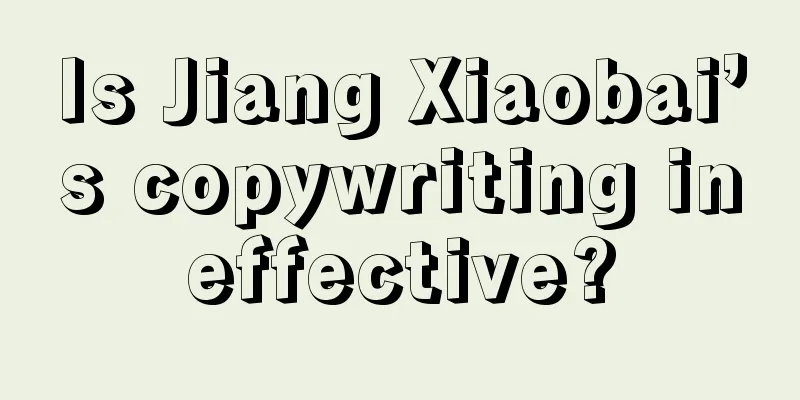Paris Olympic Games brand marketing "learning materials" released

Introduction: Relying on culture to arouse emotional resonance is the common answer to this Olympic marketing. Although the Olympic flame above the Eiffel Tower has gone out, the enthusiasm brought by the Olympics continues to burn. Looking back at this Olympics, the Chinese delegation won a total of 91 medals, including 40 gold, 27 silver and 24 bronze medals, creating the best record in overseas competitions and achieving historic breakthroughs in multiple events, which has led to an unprecedented rise in the enthusiasm of the whole nation for the Olympics. According to Weibo data, during this Paris Olympics, the number of posts on Weibo reached 416 million, the number of interactions on the entire platform reached 1.698 billion, and the number of topic readings on the entire platform reached 479 billion. All data have surpassed the year-on-year performance of the Tokyo Olympics. With such huge attention, many brands that have deployed Olympic marketing have also reaped commercial rewards, either gaining attention in terms of traffic or achieving good results in sales. It is worth mentioning that many brands have used Olympic marketing to strengthen their brand concepts and brand images, and have deeply integrated with Chinese culture, successfully carrying out a wave of cultural output, which has not only won market recognition, but also greatly enhanced the brand's reputation and international influence, setting an example for other brands. As market competition becomes increasingly fierce, many new tea brands have set their sights on overseas markets. Since 2023, new tea brands have been rapidly advancing their global layout. In this process, using sports events for publicity has undoubtedly become a major boost to promoting tea drinks to the world. Therefore, brands naturally did not miss the Olympic Games, a highly anticipated marketing node. Among them, Heytea and Bawang Chaji are undoubtedly the winners in this new tea drink Olympic marketing. On July 5, local time, Heytea’s pop-up store “Heytea Paris Watching Tea Room” in Paris, France, officially opened, marking the first shot of the new tea brand’s overseas expansion during the Olympics. On July 12, Bawang Tea Princess announced that it would “go to Paris” with seven champion health ambassadors. Ten days later, Bawang Tea Princess also opened a pop-up store in Paris. Overall, there are certain similarities between Heytea and Bawangchaji’s Olympic marketing. First of all, the first point of Olympic marketing is to accurately build a deep-level fit between the brand and the Olympics. Both are obviously aiming at "health" for product promotion. For example, Heytea uses real ingredients and proactively discloses the formula of all products on sale, and Bawang Chaji has launched a nutrition label. On the one hand, athletes have become the best spokespersons for a healthy lifestyle with their extremely high requirements for healthy diets. On the other hand, the new tea beverage industry is gradually transforming towards health and quality. The "China New Tea Beverage Big Data Research and Consumer Behavior" pointed out that nearly half of consumers pay special attention to its health attributes when choosing tea beverages. Therefore, combining the brand with the health concept of the Olympics is undoubtedly a wise move for new tea beverage brands to achieve brand upgrades and expand market boundaries. Secondly, stores are the carriers of brand culture communication and consumer interaction, and are the most likely terminals to create brand potential in one fell swoop. Both use pop-up store scenes as a link to show overseas consumers the oriental tea drinking space, which not only allows more people to have the opportunity to taste high-quality tea from China, but also uses store decoration, material design, and a series of activities such as pitching pots, tea ceremony slogans, and guzheng performances to spread Chinese tea culture. Left: Materials for Heytea’s French pop-up store (Weibo @喜茶); Right: Bawangchaji’s French pop-up store activities (Weibo @付斌-FuBin) Moreover, through offline stores, the focus of Olympic marketing can be pulled back to the product experience itself, consolidating the marketing closed loop. Heytea invited Mo Farah, the Olympic champion in middle-distance running, to visit its Paris store, and Bawang Tea invited CCTV host Bai Yansong and reporter Wang Bingbing to visit and check in at the Paris pop-up store "TEA BAR". Finally, in addition to the brand's overseas expansion and Olympic marketing, domestic activities centered around the Olympic theme were also carried out to enhance the interactive experience and achieve universal participation. For example, Bawang Cha Ji set up sports areas in Beijing, Shanghai, Guangzhou and Changsha, allowing "encouraging exercise" to advance to "direct action"; Heytea and Anta jointly launched a new product, the Champion Slimming Bottle, which was once sold out. It can be said that the marketing of Bawang Cha Ji and Heytea not only brings traffic, but also creates an effective closed-loop conversion path, which has a positive effect on the overseas expansion of brands and tea culture. Sports brands have always been frequent participants in Olympic marketing. If there is also a medal list for the Paris Olympic marketing, then Anta will most likely be in the top 3. As a partner of the Chinese Olympic Committee, ANTA has created award-winning equipment for the Chinese sports delegation for eight consecutive Olympic Games, and has created Olympic equipment for 28 Chinese national teams in total. In addition, ANTA has cooperated with the International Olympic Committee for the first time since 2019, becoming the official sportswear supplier of the International Olympic Committee and the first Chinese sporting goods brand to cooperate with the International Olympic Committee. ANTA has obtained the closest Olympic connection with its powerful resources and is a veritable "veteran" in Olympic marketing. According to statistics, the nine national teams sponsored by ANTA won a total of 15 gold medals, 13 silver medals and 15 bronze medals, ranking first among all sports brand sponsors, making it the biggest winner in the marketing of the Paris Olympics. At the Paris Olympics, Anta also showed new vitality. On July 30, Wang Chuqin and Sun Yingsha won the first Olympic mixed doubles gold medal in the history of Chinese table tennis. Several entries instantly "dominated" the hot search list. Along with the news, the red jackets worn by the two champions also became popular. Tmall data shows that this jacket has become the first on the list of new jackets, with more than 10,000 people adding it to their shopping carts, and more than 100 people purchased it within a week. Off the court, Gu Ailing and Zhang Boheng's outfits also sparked a wave of imitation. On the Xiaohongshu platform, there were multiple entries about Gu Ailing watching tennis matches, and the tennis skirt she wore from the Anta brand became the focus and sold out on multiple platforms. Undoubtedly, Anta has also become a winner in "selling goods". However, the recognition of Anta by the Olympic Committee and young people is not just a coincidence under the halo of the champion, but the inevitable result of its far-sighted brand marketing strategy and excellent product quality. First, in order to make the brand image and innovative marketing methods fully fit the Olympic spirit and atmosphere, deep binding with athletes has become a proven successful path. Anta's brand spokespersons for the Paris Olympics include Fan Zhendong, Zhang Yufei, and Qin Haiyang - it must be said that Anta's vision in selecting athletes is unique. The bright red down jackets it designed for the Chinese swimming team became popular both at home and abroad after Qin Haiyang's "catwalk". In addition to the "male model" Qin Haiyang, Fan Zhendong, who was signed by Anta before the game, won the men's table tennis Grand Slam, and Zhang Yufei broke the medal record in China's Olympic history, which made netizens sigh that Anta's vision is extraordinary. Secondly, the Paris Olympics coincided with the Year of the Dragon. With this carrier, ANTA continued to spread the Chinese dragon culture at home and abroad. As early as 2012, the Year of the Dragon, ANTA incorporated dragon elements into the design of the award-winning uniforms of the Chinese sports delegation. Since then, ANTA has made the footprints of the "Chinese dragon" spread across the Olympic venues of London, Sochi, Rio, Pyeongchang, Tokyo and Beijing. And with the post-00s "occupying" the Olympics, the era of the Olympic Games has also arrived. ANTA has obviously grasped this trend and launched a new Olympic cultural IP - ANTA Linglong (LING LOONG), which has driven the brand to resonate with young people, which can be called a "stroke of genius". First, the cartoon image of the dragon is in line with the preferences of young consumers, and the character of the dragon portrayed in various short films is also very likable. In the past, the traditional Chinese dragon represented seriousness, height, and authority, while the ANTA dragon is smart, free and agile. This innovative "dragon" design not only cleverly narrows the distance with young audiences, but also becomes a vivid portrayal of the spirit of Z generation athletes, showing the world a new look that has both Chinese cultural heritage and modern youthful vitality. Second, the dragon not only has its own social media and surfs the Internet intensively, but also appears in top business districts and streets, completing different brand communications in offline scenarios. This all-round communication strategy combining online and offline makes the dragon, which originally existed only in myths and imagination, accessible. Anta has endowed it with humanized characteristics and emotions, and has also established a deeper and closer emotional bond with consumers. From the ancient and mysterious Chinese dragon to the modern and vivid Anta dragon, this transformation not only tells the world a new story of Chinese culture, but also strengthens the public's perception of the brand's youthful vitality through interaction. With its extreme focus on scientific research, ANTA's brand image is strongly tied to "professionalism" and has been recognized by a series of athletes at home and abroad. At present, ANTA has created competition and living equipment for 9 Chinese national teams, including Chinese swimming, gymnastics, boxing, and synchronized swimming. Among the champions of this year's World Weightlifting Cup, in addition to the five champions of the Chinese team wearing ANTA series weightlifting shoes, RIZKI JUNIANSYAH, the 73kg champion from Indonesia, also chose ANTA's second-generation weightlifting shoes; ANTA signed contracts with all members of the US men's 3×3 basketball Olympic team; long-distance running star Bekele also chose to wear ANTA equipment to step onto the Olympic field again... It is worth mentioning that while pursuing commercial success, Anta also does not forget to fulfill its social responsibilities. On the one hand, by promoting sustainable production, Anta has not only driven the transformation of low-carbon production methods in the domestic footwear and apparel manufacturing industry, but also enhanced the international image of national brands. On the other hand, Anta has joined hands with the Chinese Olympic Committee to launch the "Mountain and River Plan", using recycling technology to create award-winning equipment for the Chinese sports delegation at the Paris Olympics. The collected plastic waste will be made into special "Olympic medals" and awarded to all those who participate in environmental protection. This not only makes the concept of the Green Olympics deeply rooted in the hearts of the people, but also inspires the public's enthusiasm for environmental protection, allowing low-carbon lifestyles to enter the hearts of the public, and making an important contribution to promoting sustainable social development. In summary, the reason why Anta was able to take the lead in this marketing war is that it has a strong brand reputation and culture as a support, and has established a long-term and stable emotional connection with the public, which not only consolidates its leading position in the market, but also brings it sustained growth in commercial benefits. The Olympic Games are far from the lives of ordinary people, so when various marketing campaigns targeting the Games are delivered to individuals, the effects are inevitably weakened. Therefore, many leading brands have changed their tactics and no longer directly shout out selling points, but emphasize emotional resonance, unconsciously implanting the brand mindset into consumers. Among them, Mengniu's marketing has touched the hearts of many people. According to the data from the "2024 Paris Olympic Games Brand Digital Assets List (Preliminary Stage)", Mengniu's marketing effect topped the list. On the one hand, Mengniu's "Opening" short film uses its unique artistic techniques to shape the brand as the core of the story, rather than simply displaying the product. The white curtain metaphorically represents the flowing milk, which can not only reflect Mengniu's category and brand role in form, but also magnify and present the figure of each strong person in the form of light and shadow throughout the short film. On the other hand, Mengniu shifted its focus from champions to ordinary people. This change of perspective shortened the distance between the arena and daily life, making the brand's emotional touch more delicate and profound, and enhancing the emotional resonance between the brand and consumers. Whether it is "Opening" or "Nutrition World Everyone's Strongness", Mengniu's focus is not only on the Olympics, nor just on champions, but on every ordinary individual, reflecting its humanistic care. In addition, Mengniu has also incorporated a lot of Chinese culture into "Opening": the vocal music throughout the film is the traditional folk music of the Mongolian and Kazakh peoples - Humming, which is also listed as China's intangible cultural heritage; and the performance of the athletes on the screen is also inspired by Chinese shadow puppetry. This short film not only shows Mengniu's respect and inheritance of traditional culture, but also shows a more diverse image of China to the world. Moreover, in future overseas promotions, Mengniu can follow the example of The Opening and continue to explore stories about Chinese culture, such as telling the story of Mengniu and the herdsmen of the Inner Mongolia grasslands, to show the brand's roots and cultural heritage. This will not only make Mengniu a bridge connecting Chinese and foreign cultures, but also establish brand loyalty based on emotional resonance in the hearts of overseas consumers, and effectively convey the brand's core values and vision. As a grand sporting event held every four years, the Olympic Games has attracted global attention since its inception. With its rich derivative hot topics and high emotional value of the audience, it has become one of the best channels for increasing brand awareness recognized by the industry. However, if brands want to successfully take advantage of the trend, they must plan ahead and choose the most suitable method for themselves. Looking at Olympic marketing cases in recent years, it is not difficult to find a trend: many brands are no longer limited to simple exposure within the stadium, but have turned their attention to the broader outside of the stadium, deeply exploring the deep value contained in the Olympics, so as to achieve a deeper resonance and binding between the brand and the Olympic spirit. In today's globalized world, culture has become the most penetrating and infectious language. The brands mentioned above have all chosen to combine with Chinese culture, injecting distinct cultural characteristics and unique emotional charm into the brands. This marketing strategy that combines Chinese culture not only makes the brand more distinctive and unique on the international stage, but also promotes the exchange of Chinese and foreign cultures, wins wider international recognition and respect for the brand, and leaves more Chinese cultural impressions on the world. |
<<: The Black Wukong myth is booming: 5 lessons for Chinese consumer goods
>>: Not just wholesale! 1688's ambition for the C-end is revealed
Recommend
The LV boss may be the least relaxed Frenchman
LVMH Group is seeking new growth points and brand ...
11.58 million young people "escape from virtual to real": flee from large factories and flock to manufacturing
Nowadays, more and more young people are fleeing l...
WeChat quietly launched new regulations, making it difficult to migrate subscription accounts to service accounts!
WeChat recently introduced a new rule that restric...
6 types of people who can definitely make money on TikTok!
Uncover the six types of people who make money on ...
Public accounts promote "fair" iterations, but instead enter an era of chaos
Although short videos, live broadcasts and other c...
Teach you how to calculate Xiaohongshu's break-even point in 30 seconds!
How do you know your ROI and whether it is worthwh...
Can you learn in-depth content on Xiaohongshu? Comparison of Douban, Xiaohongshu and Bilibili
In everyone's mind, different products have di...
How many days can Shopee's vacation mode last? How to enable vacation mode?
Nowadays, many people are engaged in cross-border ...
Can the two parent companies of Amazon be merged? What are the benefits of Amazon's merger?
In Amazon operations, merging and splitting varian...
After reviewing the case in March, I have a new understanding of holiday marketing
This article shares new thoughts on festival marke...
The next step for "new wine drinks" - rebuilding value and breaking through barriers with 5 new perspectives
What new developments will new alcoholic beverages...
With the addition of video accounts, the wave of local life has become even bigger
Since last year, businesses have received invitati...
Children's Day Marketing: How Brands Can Make Money by Being Cute
The article comprehensively explains the reasons, ...
China's own "poor ghost meal" is selling like hot cakes on Douyin
In the era of economic downturn, "poor guy me...
From the perspective of Maotai’s 24 solar terms wine, where is the Xunfeng Yuan Universe heading?
Moutai joins hands with NetEase, what is the prosp...









